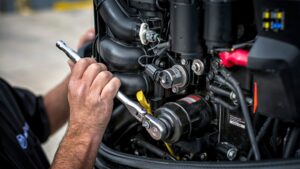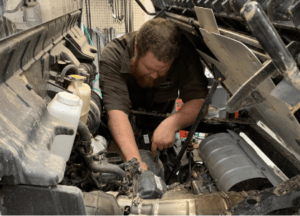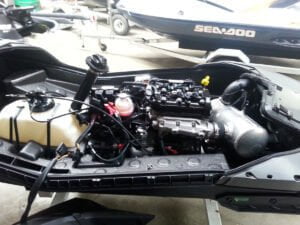Boat Repair, Service, Parts and Accessories
Trusted Service For Your Boat, PWC or SXS!
At Blackbeard Marine, we know how important service can be! When you’re invested in ensuring your pontoon, fishing, center console, bay, or outboard stays in great working order for years to come, you need knowledge and skill you can count on. Our highly trained technicians are dedicated to maintaining and servicing your G3, SunCatcher, Blazer, Skeeter, or Yamaha boat so you can get the most out of your purchase. We are boating enthusiasts – and we understand that your priority is getting out on the water!
We offer services ranging from general boat repairs to motor tune-ups, oil changes, lower unit service, winterization, prop repairs, and outdrives. Can’t bring your boat to us? We also offer dock service!
Need a depth finder installed? We offer installation and repair of depth finders, fish finders, GPS, radios, speakers, lights, and gauges too! We also have a full fiberglass and hull repair shop. Accidents happen – get your fiberglass hull repaired and look new again.
*Note: Our business is to try and work on anything; however, there are certain circumstances where we might say no, such as boats/motors older than 20 years old or where we are unable to obtain parts.
THE RIGHT PARTS!
Whether you need repairs or maintenance, or you’re looking to customize your pontoon, fishing, center-console, bay, or outboard – Blackbeard Marine is proud to carry a wide selection of parts and accessories so you can maintain your vehicle and make it your own. If we don’t have it in stock, we’re happy to order it for you.
Got a custom design in mind? When you want to customize your boat or outboard, we have the experience and know-how to make it happen. Blackbeard Marine is committed to ensuring you enjoy the best possible experience with your G3, SunCatcher, Blazer, Skeeter, or Yamaha boat. Give us a call or stop by and let us help you plan out the perfect customization tailored to your individual style!
At Blackbeard Marine, we offer a variety of marine accessories and boat parts. From basic oil change kits, lower unit gear lube, and trolling motors to depth finders, fish finders, and GPS units. We also offer bulk 2-stroke oil (save $2 and bring your own gallon jugs!).
We Offer Minn Kota, MotorGuide, Garmin, Lowrance, Hummingbird, PowerPole, Atwood, Lenco, and much more!
SERVICES OFFERED
- Oil Changes
- Lower Unit Service and Repair
- Electronic Repairs
- Winterizations
- Upholstery Repair
- Install Fish Finders and Trolling Motors
- Certified Technicians


